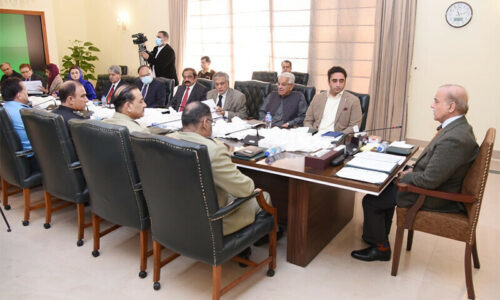Pakistan’s economy is at a crossroads, grappling with an array of severe challenges that extend beyond the typical ebbs and flows of economic cycles. These challenges include rampant inflation, a heavy burden of debt, and significant currency devaluation. These are not merely abstract economic indicators; they have tangible effects on the daily lives of millions of Pakistanis, from urban centers to rural areas, and shape the nation’s future prospects in profound ways. Inflation has hit hard, squeezing household budgets and leaving many to face the rising costs of basic necessities without a corresponding increase in income. The burgeoning debt, both domestic and foreign, threatens fiscal sustainability and places a strain on the country’s developmental goals. Moreover, the devaluation of the Pakistani Rupee exacerbates these issues, affecting everything from import costs to external debt repayment. Understanding and addressing these economic vulnerabilities is crucial if Pakistan is to stabilize and improve its economic situation. This analysis aims to delve deeper into these critical issues while also exploring viable strategies for economic recovery and stabilization that could guide the country
toward a more prosperous future.
Inflation has become a critical concern in Pakistan, affecting everything from food prices to energy costs. The impact on households is severe, as rising prices erode purchasing power and savings. Economist Thomas Sowell’s observation that “Inflation is the one form of taxation that can be imposed without legislation” is particularly relevant here. The government could consider tightening monetary policy to manage inflation better. At the same time, it might implement targeted subsidies to alleviate the burden on the most vulnerable segments of society. Moreover, reforming the agricultural sector and improving food supply chains could prevent the type of supply shocks that contribute significantly to inflation.
Debt management is another monumental challenge. Pakistan’s growing domestic and international debt obligations require careful handling to avoid default and stabilize the economy. The wisdom of John Kenneth Galbraith rings true in this context: “All of the great leaders have had one characteristic in common: it was the willingness to confront unequivocally the major anxiety of their people in their time.” Effective debt management strategies could include renegotiating terms with major creditors, seeking debt relief, and reforming the tax system to increase government revenue without placing undue stress on the populace. Additionally, fostering a more robust and inclusive economic growth can generate the necessary revenues to service debts without compromising public services.
The devaluation of the Pakistani Rupee further complicates the economic scenario. This devaluation affects trade balances and increases the cost of repaying foreign debt. Economist Paul Krugman has noted that a flexible exchange rate allows a country to adjust to economic shocks more effectively. Pakistan could take advantage of this flexibility by implementing policies that enhance the competitiveness of its exports and reduce reliance on imports. Moreover, efforts to attract more foreign direct investment could help bolster foreign exchange reserves and strengthen the economy. Implementing structural reforms to improve the business environment and ensuring political stability are also critical to attract foreign investors.
Despite these daunting challenges, there is room for optimism. If Pakistan can implement stringent fiscal policies, pursue innovative economic reforms, and strengthen its institutional frameworks, there is a strong possibility for stabilization and growth. The words of Helen Keller remind us that “Optimism is the faith that leads to achievement. Nothing can be done without hope and confidence.” With hope and a clear strategic vision, Pakistan can navigate its current economic difficulties and work toward a more prosperous and stable future.
The path ahead for Pakistan is fraught with challenges, but with determined and thoughtful policy actions, the nation can aim not only to recover but to thrive. Economic stability and prosperity are achievable goals, but they require both vision and action from Pakistan’s leaders and the continued resilience of its people. Engaging in broad-based economic reforms, improving governance, and ensuring the transparency of public institutions will also play a pivotal role in securing a brighter economic future for Pakistan.
Pakistan Zindabad!
About the author:
“The writer is an engineer by vocation and has a deep, research-based knowledge of Pakistan’s polity.”
Email: awais.army96@gmail.com




